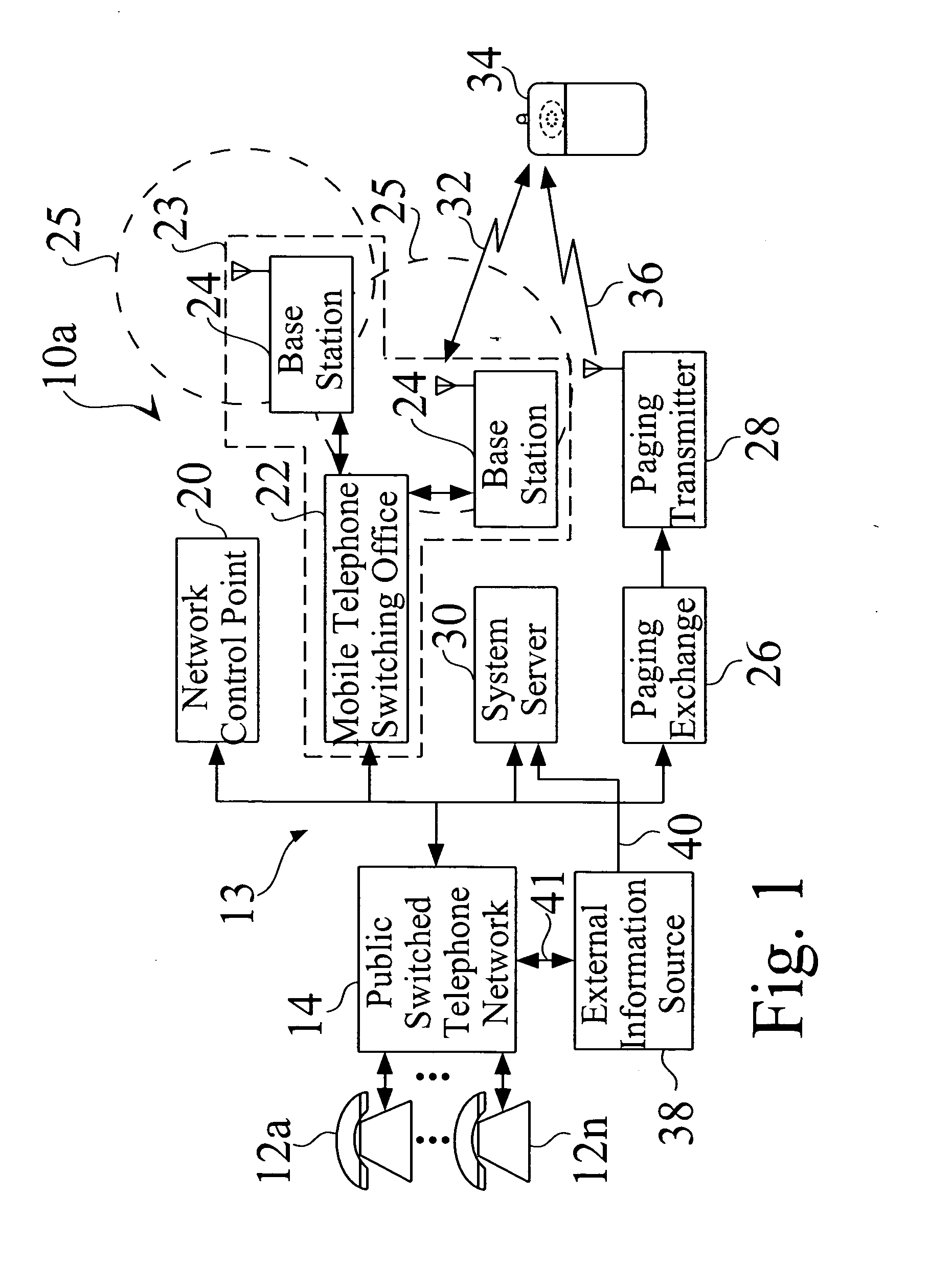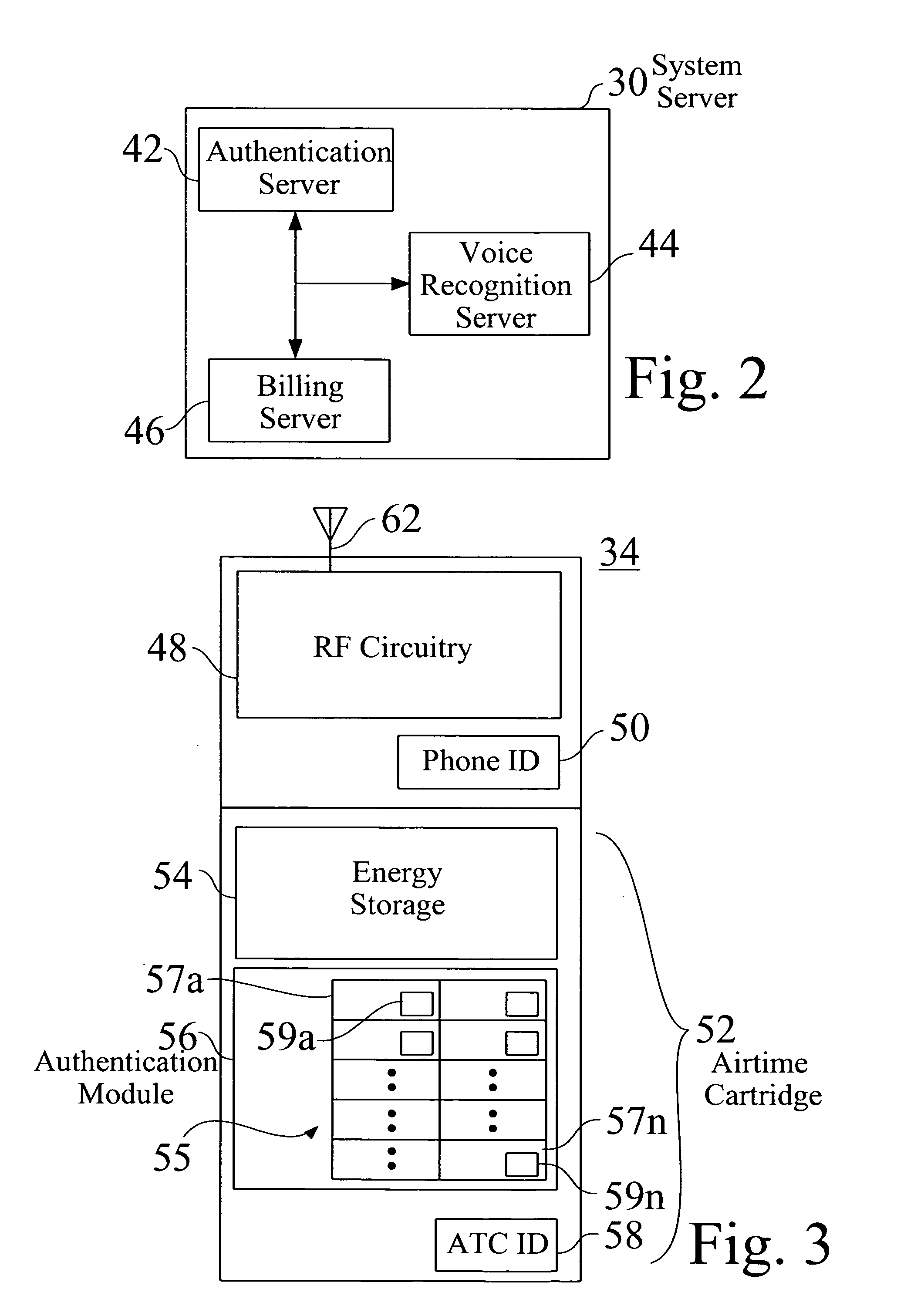Portable cellular phone system having automatic initialization
a cellular phone system and automatic initialization technology, applied in special services for subscribers, instruments, eavesdropping prevention circuits, etc., can solve the problems of burdening users with roaming charges, no single billing plan can be optimized for any specific user, and the amount of monthly charges based on the average maximum use of prepaid minutes is often more expensive than the amount needed by a particular user
- Summary
- Abstract
- Description
- Claims
- Application Information
AI Technical Summary
Problems solved by technology
Method used
Image
Examples
Embodiment Construction
[0087]FIG. 1 is a functional block diagram of for a portable cellular phone system 10a with a voice recognition operating system. Conventional telephones 12a-12n are connected, through a public switched telephone network (PSTN) 14 to a system network 13, which is connected to a network control point (NCP) 20, which provides routing decisions. A mobile phone infrastructure 23 includes a mobile telephone switching office (MTSO) 22, which is connected to network 13, and to one or more base stations 24. A paging exchange 26 is also preferably connected to network 13, and is connected to one or more paging transmitters 28.
[0088] A portable cellular phone system server 30 is also connected to the system network 13. A portable cellular phone 34, which is preferably keyless, when activated, is in communication with the system server 30, through a base station 24, the mobile telephone switching office 22, and the system network 13, i.e. the mobile telephone, switching office 22 and one or m...
PUM
 Login to View More
Login to View More Abstract
Description
Claims
Application Information
 Login to View More
Login to View More - R&D
- Intellectual Property
- Life Sciences
- Materials
- Tech Scout
- Unparalleled Data Quality
- Higher Quality Content
- 60% Fewer Hallucinations
Browse by: Latest US Patents, China's latest patents, Technical Efficacy Thesaurus, Application Domain, Technology Topic, Popular Technical Reports.
© 2025 PatSnap. All rights reserved.Legal|Privacy policy|Modern Slavery Act Transparency Statement|Sitemap|About US| Contact US: help@patsnap.com



